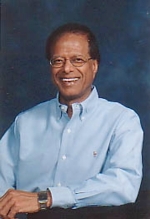|
Each one of us, regardless of our national origin, race, color of the skin, gender, religious beliefs, academic qualifications, status in society or political affiliation may run into a situation of despair, one time or another. One may choose the path of faith and surrender that Laj Utreja chose and find a conclusive meaning of life and make observations similar to his. We apply our intellect to understand and justify or refute our observations about natural phenomena. We also apply our intellect to discriminate between right and wrong in human behavior based on ethical principles.
|
|

|
|
The question arises whether we are predisposed to the faith that we have, the observations that we make and the reason that we use, or, we have a choice in changing anyone or all of those? Is choosing the path of faith and surrender our choice or a predisposition? Can a rational mind be predisposed to faith and surrender? Laj has made an attempt in ‘Who are we?’ to look at those aspects.
In the words of Laj, “The journey has afforded me an understanding of the eternal question, Who are we? I’ve been drawn into critically looking at the lives of three human beings: my brother, I and Sai Baba. Correspondingly, the book is divided into three parts. In Part One, ‘Is there rebirth?’, I explore the enigmatic fact that faith can lead to understanding of knowledge impossible through a rational mind. By an act of earnest surrender during the period of helplessness, I was able to bring to consciousness a revelation about a future event. It provided me a rare insight into the issues of life after death.
Consistent with my revelations, in Part II, ‘How do we reappear?’, I have made simple observations of our environment that throw light on the principle that each person’s nature is an expression of his soul. It is inherent in the very process of material manifestation and therefore subject to the law of ‘cause and effect’. I have presented a systemic approach about the development of a human body and how it acts as a field point in the progression of his soul. Our predisposition to physical and mental makeup is a natural consequence of our attitudes and unresolved intentions expressed as material nature. The approach has provided me a basis to hypothesize our present life and its continuity after death through the unit of conscious life, consciotron expressed through our unresolved intentions. At death, our soul creates a consciotron ready to take an expression in the next manifestation.
In Part III, ‘Do we have a choice in destiny?’, an extension of Part II, I further explore the concept of material ‘cause and effect’ in making our destiny. My revelations expose the fact that we are all expressions of the same reality. It is our intentions and actions that determine how we must manifest. The diversity that we see in plants, animals and human beings are expressed forms during their various stages of evolution ever pursuing the source. Life is a stream that flows ceaselessly, without beginning or end. Seeking the reality voluntarily and deliberately alone is free will providing a basis to get out of this cycle of life and death. Everything else is material "cause and effect" and thereby destined. Our intentions, words and actions collectively determine if we are plant-like, animal-like, or god-like. Becoming enlightened or god-like provides one an extraordinary potential to descend at will for the sole purpose of benefit to manifestation.”
The book is of interest to all who want to know why they have this life. This is equally of interest to people of all faiths who want to find the meaning of life through their faiths. If we take away the veil of faith covering us, underneath we are the same people with human needs, desires, emotions, goals and aspirations. In that sense the book offers all human beings a basis for their existence. It touches human experience on several levels at once. In that context it affords a point of departure from conventional thought for students, teachers and others interested in sociology, psychology, philosophy, theology, general science and personal development. To the readers of memoirs and novels it provides an interesting way to look at life experiences.
There is a usage of foreign words, where necessary, to offer a perspective for the origin of thought. Everyone has access to similar words conveying similar thoughts indigenous to their native cultures. Laj has quoted, where necessary and possible, verses from Bhagavad Geeta to validate his point of view. In that sense people of different faiths have similar statements or verses for authentication from their scriptures. The readers may curiously look forward to his sequels in the work, ‘What is our origin?’ and ‘What is our purpose?’
Tell us what you
think of this feature.
|



